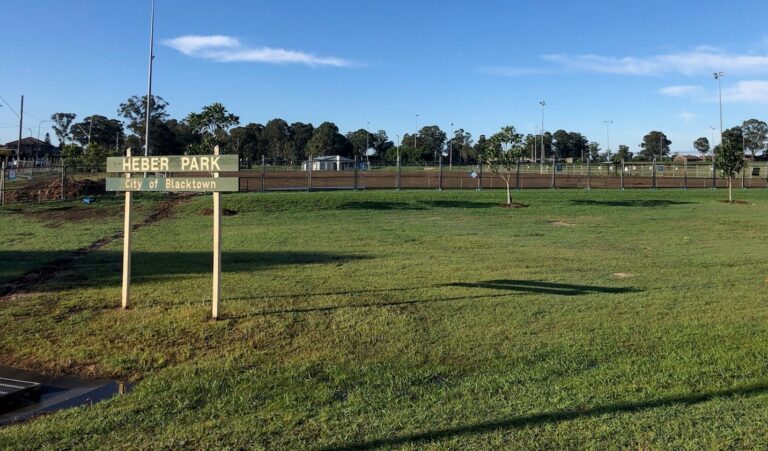
To be, or not to be heritage
By Joan Henson
The fast-tracked demolition of Lilyfield houses, on streetscape that residents have been advised to maintain like heritage, has surfaced in a 2004 Leichhardt Council report that recommended local conservation areas be expanded.
This extension would have incorporated the streetscape of Mary Street, where a house was demolished about six weeks ago using a Complying Development Certificate (CDC).
Almost 120 years ago suburban homes began populating the land previously designated to Lilyfield’s wealthy estates. A 2004 Leichhardt heritage report recommended that the existing Campbell’s and Austenham Estate conservation areas, which protect these early streetscapes, be extended to the historical estate boundaries from which blocks were subdivided.
For 30 years Gary Rowley has lived in a 1920s Californian bungalow, like that demolished on his street. While the bungalow façade is preserved in Campbell Avenue conservation area, which is directly behind Mary Street, he says seven bungalows on Mary Street are unlisted.
Mr Rowley says that demolition of homes with facades protected in adjacent conservation areas was previously unthinkable, as “whenever we wanted to carry out renovations through the council, they told us that it was a heritage area, so you couldn’t change the frontage or your front gate.”
The NSW planning department website states that CDC approvals can cut development application determination times to 20 days, compared to an average of 70, with the sign-off of a private certifier. When residents received notice of the Mary Street demolition, many of them were hearing of CDCs for the first time, and had a week to respond.
Contact was made with Inner West Councillor (IWC) John Stamolis for an urgent freeze to be put on development via an Interim Heritage Order (IHO). IHOs provide up to a year for a full heritage assessment to be completed.
The request to place an IHO was rejected by council officers, who found the building lacked local heritage significance. An officer notified Councillor Stamolis that the boundaries of Campbell’s Estate conservation area may however be reviewed, which would be a long process and would not prevent the Mary Street property’s demolition.
Next year IWCs local environment plan will release a review of conservation area boundaries.
Private certifiers need heritage training
Paul Rappaport is a local heritage architect, familiar with the conservation areas in question. He says, “what’s happening in Lilyfield is a classic case of lackadaisical behaviour by local government, where after 30 years the community has activated the government to do something about it”.
He says that while a pro-heritage stance once drew votes, there has been a pushback by homeowners and development companies on “perceived limitations to development”.
Rappaport believes that privatising certification has dropped the standards of assessing heritage buildings, and that accreditation in heritage assessments should “come into the industry”.
After a development application is received by a developer, he says there is limited quality control placed on heritage assessments, unless a heritage architect is appointed. He says that while certifiers generally treat heritage as a quantitative unit, for heritage architects it is measured as irreplaceable material.
Streets of history buffs
Louise Appel’s introduction to Fredbert Street began a “love affair”. She has lived in the street for 29 years, and recalls deciding that the peculiar name made it the place to settle, when cycling by as a renter. Like for many residents, the homely charm of the historical architecture made the sale. She scrounged the funds to buy the house with her brother and partner.
The history of the neighbourhood has been passed around at Christmas parties and during renovations, hooking Ms Appel into researching her street’s roots. While she hasn’t solved the mystery of her street’s name, she’s found the terraces were set apart from ramshackle workers’ cottages of the time for their quality.
Every house on Fredbert Street has tall skirting boards made of red cedar – now a valuable wood – and the fireplaces are marble. She’s even searched an old street directory to determine the age of her home, which was built around 1903.
In an August 13 IWC meeting, residents supported Councillor Stamolis’ proposal that council report back on the possible expansion of Lilyfield conservation areas. Currently only the trees on Ms Appel’s street are listed.
Mayor Darcy Byrne said he will “move to expand the parameters … of the conservation zone, when the time comes for that to be considered, and when we’ve read the [heritage review] report”.
Mayor Byrne also said that there are places in Dulwich Hill and Marrickville “that may be even higher priorities than this precinct, and so it’s difficult to get a council resolution that says we’re going to spend $30 or $50 000 to just do this precinct”.









